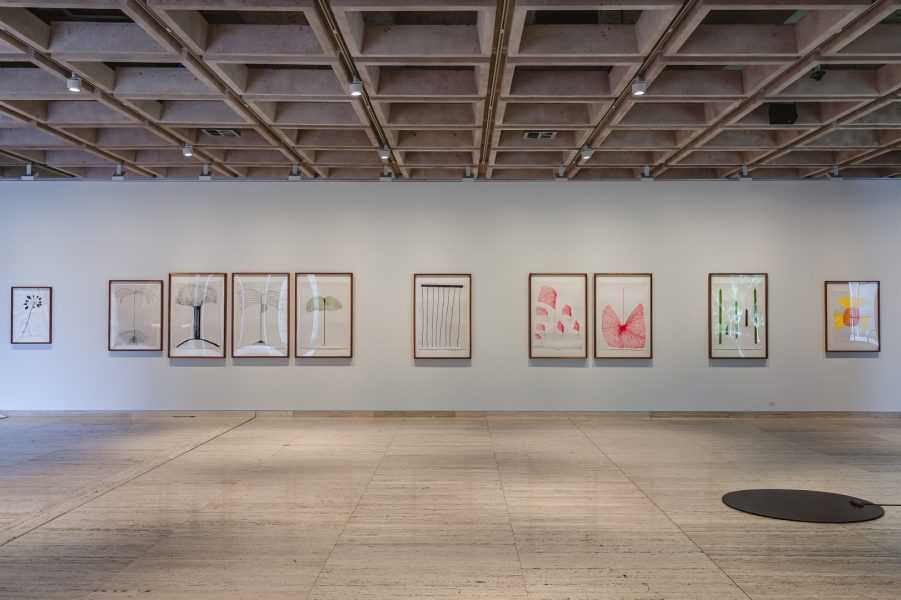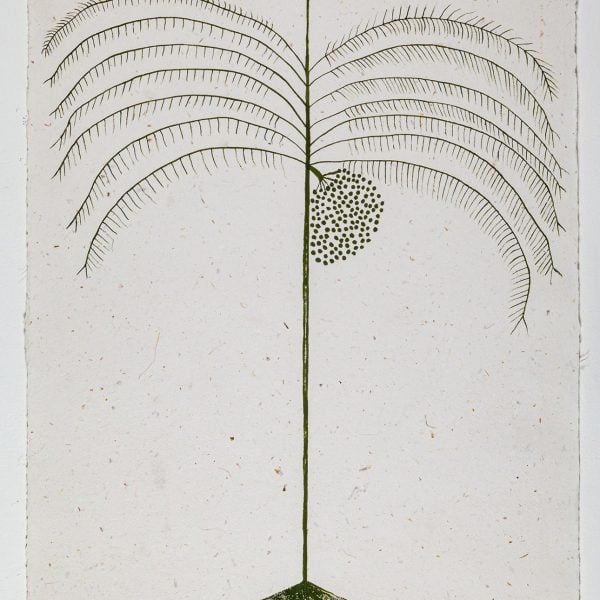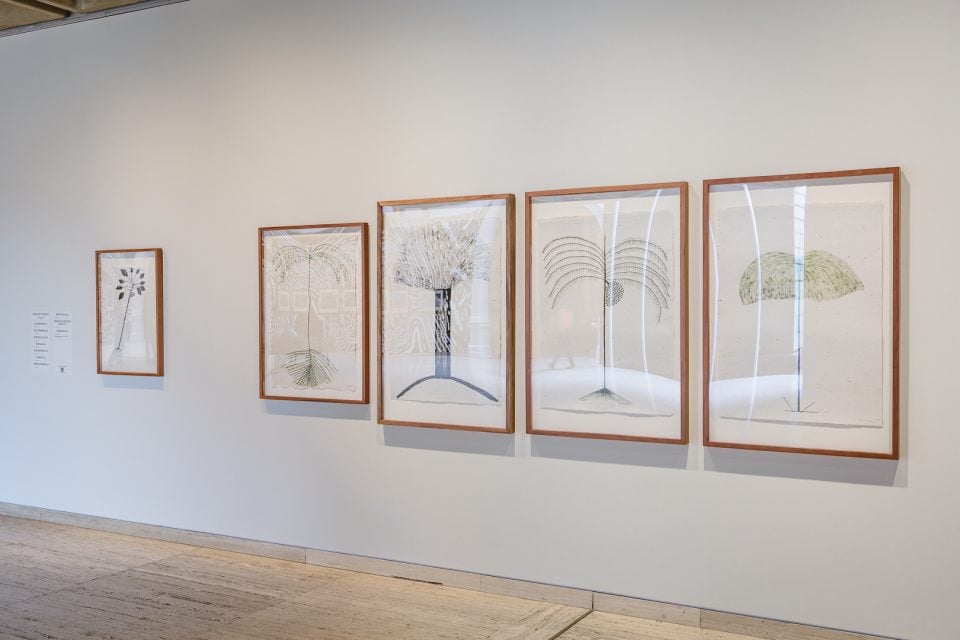Puu mothoshi 2020
acrylic on handmade paper
Art Gallery of New South Wales, purchased under the terms of the Florence Turner Blake Bequest 2022
Hii hi Hisirikipi 2020
acrylic on handmade paper
Art Gallery of New South Wales, purchased under the terms of the Florence Turner Blake Bequest 2022
Sharirima kesi 2020
acrylic on handmade paper
Art Gallery of New South Wales, purchased under the terms of the Florence Turner Blake Bequest 2022
Waimasi 2020
acrylic on handmade paper
Art Gallery of New South Wales, purchased under the terms of the Florence Turner Blake Bequest 2022
Mau utherimi 2020
acrylic on handmade paper
Art Gallery of New South Wales, purchased under the terms of the Florence Turner Blake Bequest 2022
Krimosi 2020
acrylic on mulberry paper
Art Gallery of New South Wales, purchased under the terms of the Florence Turner Blake Bequest 2022
Shereka hemoshi 2020
acrylic on handmade paper
Art Gallery of New South Wales, purchased under the terms of the Florence Turner Blake Bequest 2022
Kohere hena 2020
acrylic on handmade paper
Art Gallery of New South Wales, purchased under the terms of the Florence Turner Blake Bequest 2022
Honokorema kosi frare frare 2020
acrylic on mulberry paper
Art Gallery of New South Wales, purchased under the terms of the Florence Turner Blake Bequest 2022
Manakasi 2020
acrylic on handmade paper
Art Gallery of New South Wales, purchased under the terms of the Florence Turner Blake Bequest 2022
Sheroanawe Hakihiiwe draws on knowledges of signs and symbols in Yanomami culture to build a visual lexicon. Growing up in the remote Yanomami community of Pori Pori, located at the shores of the Orinoco river in the Venezuelan Amazon, he learned the skills of hunting and fishing from his father. From his mother, he learned the visual imagery of Yanomami ancestral knowledges and their application in basketry and body markings used in ritual ceremonies. In the mid 1990s, he learned the practice of making paper from native fibres with Mexican artist Laura Anderson Barbata (born 1958). Since then, his work has developed as a personal interpretation of Yanomami creation stories and identity; his drawings and paintings speak of rites and beliefs, observation of the jungle and his concern for the ecosystem.
This collection of drawings for the 23rd Biennale of Sydney represents the vast botanical universe of the Amazon and the ancestral legacy of the artist’s people. It is an exercise in remembering that which was interrupted with the arrival of the napë (foreigner).
The Flood
Sheroanawe Hakihiiwe, 2021
In those times there was no water, there were no creeks and no rivers. Omawe’s son was always crying because he was very thirsty.
Looking for a place to pierce the land with his bow, Omawe knelt and could hear there was water running under the earth.
A thunderous noise was heard when Omawe pierced the earth. When he removed his bow water started to burst until it reached the sky. It went to the house of Thunder. There where Thunder lives, there’s much water. That water that reached the sky formed a reservoir. That is why it rains. Omawe’s son kept drinking water until he was swollen. Omawe tried to close the hole with a stone, but earth collapsed, and a river was created. Water spread everywhere. To escape the deluge some tied their hammocks to the palm trees, but the force of the water took some Yanomami. Others ran and took shelter on the Maiyo mountain.
The flood wasn’t stopping. The Yanomami that sheltered on the Maiyo could see how waters kept rising, and they were very worried.
Many days passed until water was lapping at their feet.
Everyone was wondering what to do. Then they asked a man to hand over his mother as a sacrifice.
The old woman was crying, begging for her life. They cut her hair, painted her body and adorned her ears with flowers. And since the waters were not receding, they threw her into the water. The waters started to withdraw almost immediately.
But a long time passed before the soil was ready for planting. Those who survived planted ocumo*, plantain, yucca and cambur**.
The old woman survived and turned into a large black fish, the Toruno**, and lived there in the Parawa* river.
As told by Sheroanawe Hakihiiwe to Luis Romero.
Footnotes
Ocumo* = Malanga or Chonque
Cambur**= banana
Toruno** = a type of large catfish
Parawa ** = Orinoco river


